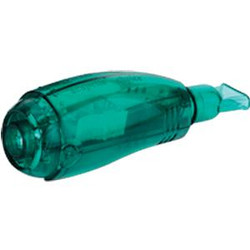
If continuous suction is used, carefully control the negative pressure it should not be less than −5 to −10 cm of water. Īttach thoracostomy tubes to a three-way stopcock to allow intermittent aspiration of the tube (e.g., q2-4h) or to a continuous suction device.If continuous or prolonged pleural drainage for removal of fluid or air is required, place a thoracostomy tube (see Chapter 3 for thoracic drainage techniques). The pleural space may be drained intermittently by thoracocentesis using a hypodermic needle. Finally, although mediator-directed neutralization therapies have been ineffective in the past, future application of genomic and proteomic data may direct patient-customized immunomodulatory treatments. Activated protein C, which is used for the treatment of septic shock associated with disseminated intravascular coagulation, is a unique agent in that it has both anticoagulant and anti-inflammatory actions. Supportive measures for conditions of increasing severity include supplemental oxygen, intravascular fluid administration, vasopressors, stress-dose corticosteroids (improves vasopressor efficacy), and mechanical ventilation. If the infection breeches an anatomic space not well protected by the immune system (e.g., pleural empyema), drainage and/or a surgical procedure may be required. A cautionary note is that some of the most effective bactericidal antibiotics, particularly those with cell wall-directed activity such as β-lactams, also facilitate the release of LPS into the local environment or systemic circulation. In the clinical context of an overwhelming bacterial infection, antibiotics are the mainstay of treatment. Treatment options for parenchymal disorders, such as pneumonia and septic shock, are reviewed in Table 1. Conditions with chronic sputum production are also improved by the use of physical treatments (e.g., an expiratory flutter valve or chest physiotherapy) to improve secretion management. Inhaled corticosteroids may be required to attenuate inflammation and other immune responses if the source of the LPS exposure cannot be eliminated. Wheeze and cough due to bronchospasm can be abated with the use of bronchodilators such as albuterol. Pure airway disorders are often only minimally benefited by administration of antibiotics. The therapies for LPS exposure can be classified as those associated with either airway or parenchymal disorders. Denlinger, in Encyclopedia of Respiratory Medicine, 2006 Management and Treatment Blood cultures from horses with endocarditis are often negative positive cultures often contain Streptococcus equi, believed by many to originate from a previous or concurrent throat infection. Individual thrombi range in size from barely perceptible to those that fill the atrium. When present, thrombi are typically situated in the adjacent atrium. The lesions are sometimes referred to as vegetations ( Figure 40-1).Įndocarditis usually involves the mitral or aortic valves, but occasionally it affects the tricuspid valve (in about 10 percent of cases). 6 Valvular lesions are sonographically characterized by excessively bright, thickened, and occasionally abscessed cusps, deformities that may in turn lead to stenosis and regurgitation resulting from imperfect coaptation by the damaged leaflets. Farrow DVM, DACVRProfessor of Veterinary Medical Imaging, in Veterinary Diagnostic Imaging: The Horse, 2006 BACTERIAL ENDOCARDITIS (VEGETATIVE ENDOCARDITIS)īacterial endocarditis can involve any of the heart valves, and it may or may not be associated with thrombus formation. Plus, it can be used with your mask or mouthpiece nebulizer.Charles S. The Acapella Valve is designed to be easily cleaned and sterilized. This should take between 10 and 20 minutes.


Repeat until no further mucus is expelled. After 5 or 6 exhalations try to cough if you have not done so already. At the end of each exhalation, hold your breath 2 to 3 seconds. Keep alternating between regular and slow breathes. Your exhalations should be about 3 times longer than your inhalations. Breathe in and out regularly through the valve 5 times. If your lungs are lower volume, you can use the blue or low flow valve. The green or high flow valve is for users who can exhale at 15 liters per minute or more for at least three seconds. Exhaling against resistance creates back pressure or positive pressure which allows mucus to move from peripheral airways to the larger central airways so it can be coughed out. Why’s that good? The vibration opens up your airways, facilitating the movement of mucus. As you exhale, the ball moves up and down, doing two things-a) vibrating your airways and b) making you exhale against resistance.

How’s it work? Inside the valve is a small steel ball in a cone shaped valve. It combines the benefits of positive expiratory pressure or PEP therapy with airway vibrations. The Acapella Valve is a unique handheld device that keeps your lungs clear of mucus so you can breathe easy.


 0 kommentar(er)
0 kommentar(er)
